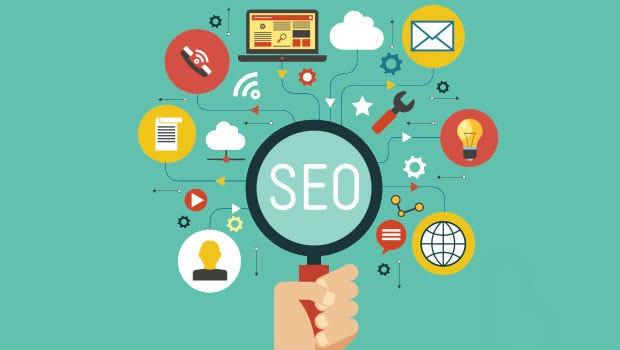Today, it can be easy to disregard something like blogging as un-sexy and outdated in terms of being a viable channel to market your business. Plus, with a new social media platform arising virtually every year, neglecting blogging is easier now than ever before.
Despite this, having an active, curated company blog is just as important today as it was 10 years ago (if not more important).
In this article, you will discover a handful of reasons why you should still blog even if you’re killing it on much newer, hipper social media platforms. You’ll also learn four strategies on how to maximize blog traffic and the influence of your blog.
Why You Should Still Write a Blog
1. Longer Lifespan of Content
For the most part, Instagram and Snapchat content doesn’t show up in Google’s search results. On top of that, the lifespan of a Snap is a mere 24 hours. On Instagram, posts are lucky to stay relevant longer than 13 hours.
The short life cycle of this social media content is certainly a double-edged sword: the fact platforms like Twitter, Instagram, and Snapchat are so real-time means they facilitate the fluid exchange of ideas and information. All this makes them timely and relevant, thus powerful tools.
On the flip side, it also makes content on the same platforms fleeting, causing it to be difficult for businesses to keep up with the “digital Joneses” when it comes to social media. It is in the best interest of these social media platforms to ask for more content. It is in the best interest of Google to ask for the best content.
By having a company blog, customers could potentially be reeled in years down the road, all with a single piece of high quality content.
2. Impact on SEO
Despite the amount of media attention given to Instagram, Snapchat, Facebook and company, you shouldn’t forget that there are approximately 3.5 billion Google searches conducted every single day.
Comparatively, Facebook sees an estimated 2 billion searches per day, and Pinterest approximately 2 billion searches per month. Instagram’s total monthly user count just recently reached one-fifth of Google’s number of daily searches, and Snapchat is even further behind.
It’s clear Google is still the world’s top search engine. In order to get the most out of Google, you should be taking SEO (search engine optimization) into close consideration. When it comes to SEO, writing quality blog posts is a terrific way for your company to climb up the search rankings.
The higher your SEO, the higher your probability of landing a client who stumbles across your work through Google in the future.
3. Ownership
Time and again, history has proven that the relevance of social media networks is a hard thing to predict. Just remember, Myspace was king from 2005 to 2008, Tumblr was popular from 2007 to 2013, and Vine was hottest from 2013 to 2015.
Instagram, Snapchat, Facebook, and the rest are all terrific platforms to use in order to garner the attention of your audience and to grow an audience, but using them as your company’s “home base” could prove unwise.
Blogs are much different. They are yours and only yours. No one else can take them away from you…well, except GoDaddy or Google Domains, but you get the point.
Successful Blogging Strategies
Now that you know a handful of reasons why blogging is still an indispensable marketing strategy, the real work begins. To help you, here are some tips and best practices to use to make sure your blog is getting the maximum exposure it deserves.
Leverage Platforms Like the One You’re Reading on Right Now — Medium ;)
It’s no surprise that today’s online landscape is saturated, and the blogosphere is no different. That’s why fresh platforms like Medium are such a valuable asset to have to increase the traffic and influence of your company blog.
Medium provides the perfect venue to showcase your own blog because it is (more or less) a blog in itself. It is a channel designed specifically for written content.
Additionally, Medium provides users with something they can’t automatically get from a standalone blog: a built-in audience of more than 30 million monthly users. Medium gives users the scale that would otherwise take years to build and nurture with a standalone blog.
Ready to get started? Here are some pointers:
- Read Quincy Larson’s article, which analyzes the best practices of the top 252 Medium articles in 2016.
- Use tools like Rabbut and Upscribe to seamlessly capture your reader’s emails, preferably after offering them a freebie (ebook, video course, etc.) in exchange for their email address.
- Use Medium to republish content from your company blog, and be sure to include a link to the original post so readers can stay in touch with you.
- Try your very best to get published on a large, relevant publication. To do this, reach out to the respective editor (via email or Twitter) with a link to your 100% completed article. Include a quick pitch going over why your content would be a great fit for the publication.
Don’t Be Afraid to Pay
Don’t be too shy to pay to promote your blog in the form of social media advertising (via Facebook ads, LinkedIn ads, and Twitter ad, etc.).
Social media moguls like Gary Vaynerchuk think Facebook advertising is single most valuable commodity in the online marketing world today, so it could definitely be worth your while to put some dollars behind the medium.
To get started, watch this short tutorial video covering how to create and manage Facebook Ads.
Use Quora
Neil Patel, digital marketing expert and founder of four multi-million dollar companies, preaches to his audience to search on Quora to discover which questions are being asked most often in your niche. You can find these questions in the Top FAQ section of the website.
After you find a question you like, write an answer to it in the form of a blog post. This will increase the likelihood others will search for and see the post, find it valuable, and come back for more.
Network
You never can go wrong with networking, and tools like Meetup.com, Facebook Groups, and LinkedIn Groups make meeting like minded people easier now than ever before. Set aside an hour to search for groups and meetups in your niche.
If you enjoyed reading this post, please recommend and share it to help others find it!
Call to Action
If you really enjoyed this article and want to receive the shortened, PDF version of The 7 Mindset Shifts Needed for Successful Social Media Marketing, then click here to receive it now!
https://themission.co/your-company-blog-is-still-just-as-or-more-powerful-than-snapchat-instagram-and-facebook-2caa4a60a316




